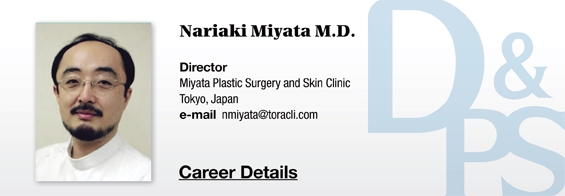
We have discussed various medical devices used in aesthetic medicine in Japan such as laser, radiofrequency (RF) and ultrasound, etc. In the last article, we took a close look at dermal filler and botulinum toxin injections which take up a large proportion of all aesthetic procedures performed. Most clinicians specializing in aesthetic medicine use these devices and techniques in their practice. Other procedures lying outside the non- or minimally invasive treatments fall under the specialty of cosmetic or plastic surgeons. However, as I have emphasized many times already, Japanese patients are averse to surgical or invasive procedures with long downtime. Therefore, even plastic surgeons have to rely on non-surgical treatments to make ends meet (Aesthetic clinicians or franchise clinics offering lower prices tend to be most popular for non-invasive procedures).
In this article, we are going to discuss a type of aesthetic procedure using thread or suture materials. It uses techniques different from irradiation or injection. In Japan, patients who want a more drastic outcome prefer the thread lift. I have to say a far smaller number of patients seek thread lift compared to laser or injection treatments, however, the short thread lift, among different types of thread lift procedures, is particularly popular (We will discuss the reason behind this popularity later.).
[Advertisement] A-One LITE(Facial Diagnosys System) – Manufacturer: BOMTECH(www.bomtech.net)
In Japan, specialists focusing on insurance covered treatments (non-aesthetic) often provide aesthetic procedures on the side. These practices may perform filler injections but rarely perform thread lift. When it comes to thread lift, aesthetic clinicians have a definite advantage.
Let’s take a quick look at the history of thread lift and current trends in Japan.
Device treatments have limited effects in lifting soft tissues and fat of sagging skin. For this reason, thread lift was developed for patients who do not want surgery. Thread lift has been in use for decades in Japan. In the early days, cogged, non-absorbable Aptos thread was widely used for face lift but in Japan, only a few plastic surgeons performed this procedure. It was soon followed by techniques using absorbable thread such as Happy Lift and improved techniques of Korean doctors were introduced in Japan. Thread lift has been established as a new field of aesthetic treatment but it is still not as popular as some of the other procedures. It remains a difficult procedure to master for dermatologists and other specialists.
The reason for its failure to be widespread was the lack of appeal in Japanese people rather than lack of efficacy. Japanese patients are uncomfortable about the idea of inserting a foreign material into their skin to pull up inner structures. Making an opening in the temporal region for thread insertion was seen as invasive and patients often rejected the treatment despite the doctor’s recommendation. Traditional thread lift was performed by a few specialists on a small number of patients desiring drastic effects.
A short thread lift technique was developed in Korea. In this new technique, multiple strands of uncogged, absorbable, monofilament PDO (polydioxane) thread (needle attached) are inserted for face lift.
-To be continued-




















